There are many websites out there that give proper information on composting and will give you the ratios of different materials needed for optimum composting. When I read those I find my eyes glazing over and I go back to my lazy ways. I have had a few people ask me what I do, so I figured I would share, and expose myself for what I am: a lazy composter.
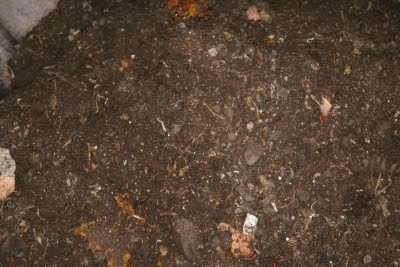
I only have one compost pile going. If I had more room there would be three: one for feeding, one for cooking and one for pulling. Right now I do all three in the same pile, and it works fine for me.
The first thing you need when starting a compost pile is a place to put it, it needs to sit and cook for weeks and months, so pick a place that is out of the way and will not be needed. Mine is right next to the shed and the chicken run.
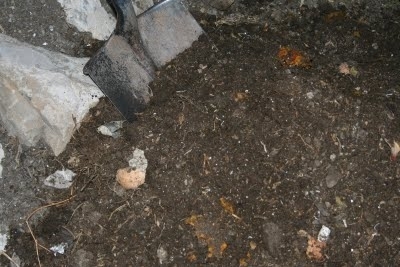
I put in fruit and vegetable scraps, paper (shredded, come and try to steal my identity….my bills are composting in chicken manure!), old bread, egg shells, leaves, garden waste, and animal manure. Egg shells will take sometime to break down, I try to break them up a bit when I am turning the pile. Eggs shells enrich the soil with calcium and other trace minerals, which will, in your garden, make your vegetables richer in minerals. If it isn’t in the soil it won’t be in your food.
I don’t put meats, weeds, cooked foods or woody plants in my compost. If you have a wood chipper or are willing to cut up woody plants and trimmings you can add them, they just take a long time to break down, so I don’t bother.
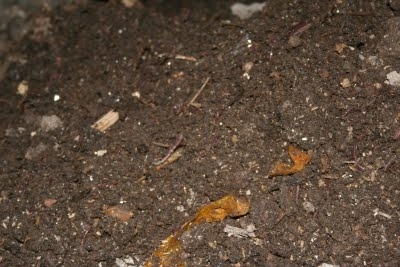 (can you see the worms?)
(can you see the worms?)Any kitchen scraps, including meats I give to the chickens. Then later I add the chicken dropping to the compost, that is a good way to make you food waste work for you.
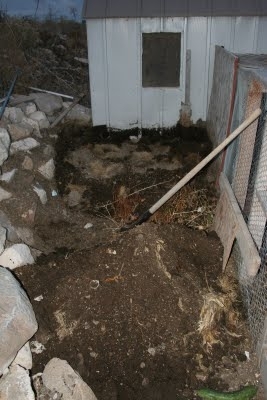 Depending on the time of year I work my pile differently. During the summer I add everything to the pile and cover it with compost. It then gets turned and watered weekly and everything breaks down very fast.
Depending on the time of year I work my pile differently. During the summer I add everything to the pile and cover it with compost. It then gets turned and watered weekly and everything breaks down very fast.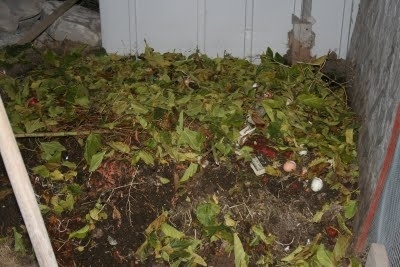
Then we started to layer. It doesn’t matter the order, but layering keeps things from rotting, if you have a whole bunch of vegetable matter in one spot it will rot and not compost. We started with a good layer of leaves.
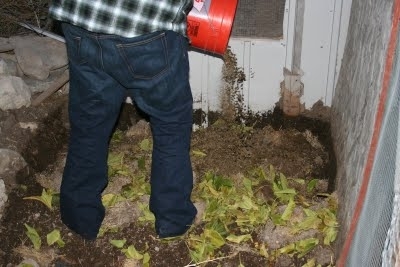
Then added a layer of rabbit manure.
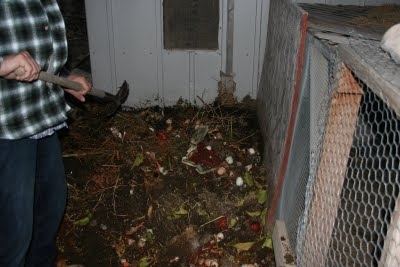 Then a layer of vegetable scraps, paper and egg shells.
Then a layer of vegetable scraps, paper and egg shells.
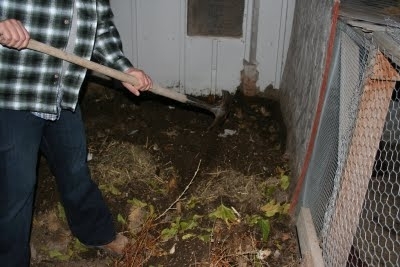 Then a nice thick layer of compost.
Then a nice thick layer of compost.
We repeated this process over and over until all the material was used.
We will let this sit, mostly undisturbed for the winter. The center will stay nice and warm and all the good organisms will be able to do their work.
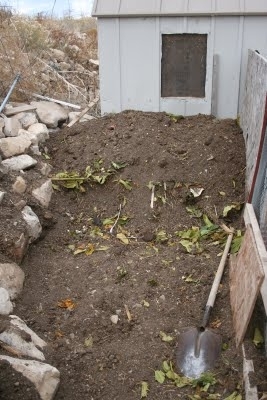 Here is a picture the next day. I will start piling my scraps to the side and cover with dirt, in the spring we will add them to the main pile.
Here is a picture the next day. I will start piling my scraps to the side and cover with dirt, in the spring we will add them to the main pile.
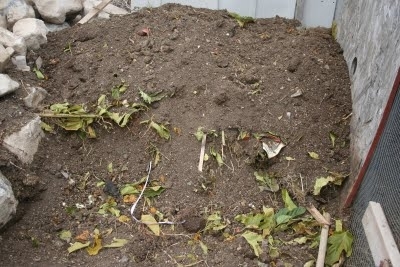 Worms are a great addition to any compost pile. We purchased ours at a local nursery, but you can get them on-line too. We got ours about 3 years ago and they are still going strong. When we first moved here you never saw a worm, ever, but now with the moving the wormy compost around I see them all the time. Worms in the soil indicate healthy soil. I love turning over a shovel full of compost and seeing it wiggly with worms!
Worms are a great addition to any compost pile. We purchased ours at a local nursery, but you can get them on-line too. We got ours about 3 years ago and they are still going strong. When we first moved here you never saw a worm, ever, but now with the moving the wormy compost around I see them all the time. Worms in the soil indicate healthy soil. I love turning over a shovel full of compost and seeing it wiggly with worms!While I can’t consider my garden organic, I have been known to use some pesticides, I would like to press upon you a very simple concept. While using basic fertilizers we can grow big plants. That doesn’t necessarily mean they are the most healthy or nutritious. Carrots may tend to have a lot of Vitamin A in them, but if there isn’t all the various macronutrients present in their environment they won’t produce as much or as high of quality. While I think there is a time and place for commercial fertilizers, in general I think it has made the quality of our food go down. If you truly want to provide superior produce for you family using compost is a must!

Thanks for writing this up! I keep thinking I'm going to start a pile, and then I don't because the instructions I read are too complicated. When I was little, my parents would just bury the kitchen scraps in random spots in the garden (so that sometimes when digging you'd come upon a bunch of egg shells and orange peels!). I think I'm going to take a combination of your method and theirs. No need to get so complicated.
Thank you.
I decided to make my compost piles right on my beds this year. I have oodles of fall leaves, barn dirt, and some other soil from my front yard. I'd like to find a source3 of rabbit manure, too. I like the idea of building your compost pile by the chicken shed. Since I'm redoing things this year, I think I'll do just that.
How do you keep your chicken's water from freezing, during the cold days of winter?